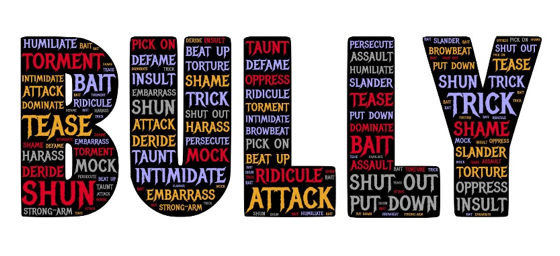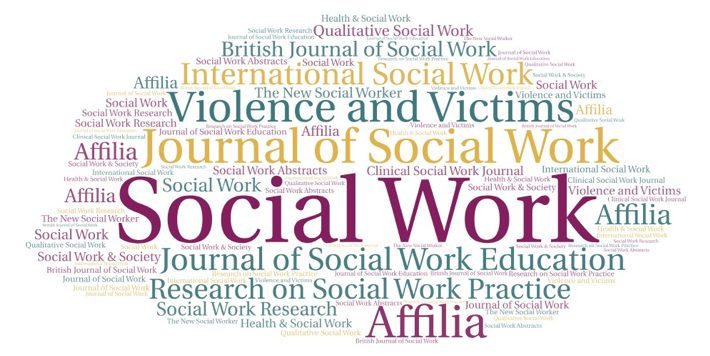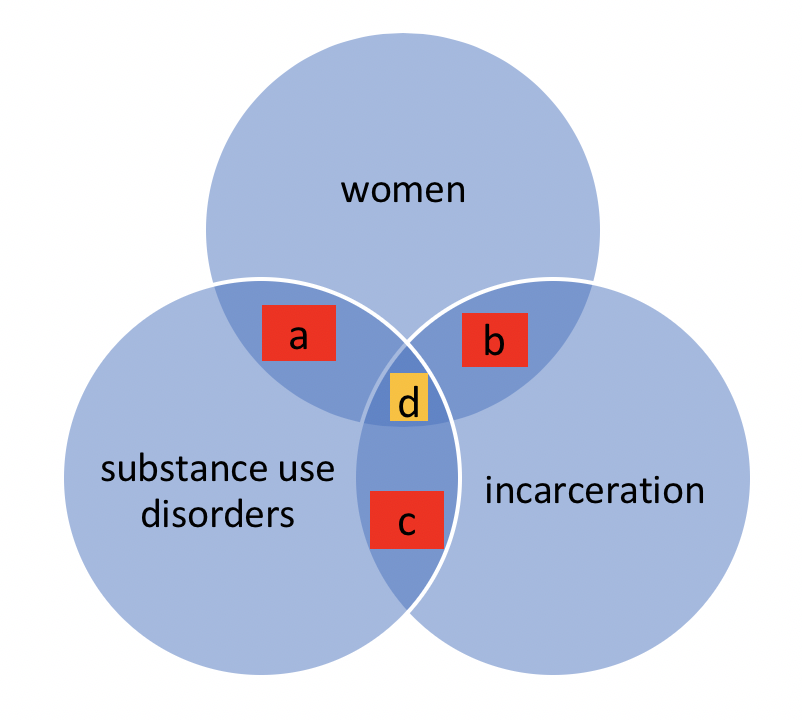Module 2 Chapter 3: What is Empirical Literature & Where can it be Found?
In Module 1, you read about the problem of pseudoscience. Here, we revisit the issue in addressing how to locate and assess scientific or empirical literature. In this chapter you will read about:
- distinguishing between what IS and IS NOT empirical literature
- how and where to locate empirical literature for understanding diverse populations, social work problems, and social phenomena.
Probably the most important take-home lesson from this chapter is that one source is not sufficient to being well-informed on a topic. It is important to locate multiple sources of information and to critically appraise the points of convergence and divergence in the information acquired from different sources. This is especially true in emerging and poorly understood topics, as well as in answering complex questions.
What Is Empirical Literature
Social workers often need to locate valid, reliable information concerning the dimensions of a population group or subgroup, a social work problem, or social phenomenon. They might also seek information about the way specific problems or resources are distributed among the populations encountered in professional practice. Or, social workers might be interested in finding out about the way that certain people experience an event or phenomenon. Empirical literature resources may provide answers to many of these types of social work questions. In addition, resources containing data regarding social indicators may also prove helpful. Social indicators are the “facts and figures” statistics that describe the social, economic, and psychological factors that have an impact on the well-being of a community or other population group.The United Nations (UN) and the World Health Organization (WHO) are examples of organizations that monitor social indicators at a global level: dimensions of population trends (size, composition, growth/loss), health status (physical, mental, behavioral, life expectancy, maternal and infant mortality, fertility/child-bearing, and diseases like HIV/AIDS), housing and quality of sanitation (water supply, waste disposal), education and literacy, and work/income/unemployment/economics, for example.

Three characteristics stand out in empirical literature compared to other types of information available on a topic of interest: systematic observation and methodology, objectivity, and transparency/replicability/reproducibility. Let’s look a little more closely at these three features.
Systematic Observation and Methodology.The hallmark of empiricism is “repeated or reinforced observation of the facts or phenomena” (Holosko, 2006, p. 6). In empirical literature, established research methodologies and procedures are systematically applied to answer the questions of interest.
Objectivity.Gathering “facts,” whatever they may be, drives the search for empirical evidence (Holosko, 2006). Authors of empirical literature are expected to report the facts as observed, whether or not these facts support the investigators’ original hypotheses. Research integrity demands that the information be provided in an objective manner, reducing sources of investigator bias to the greatest possible extent.
Transparency and Replicability/Reproducibility. Empirical literature is reported in such a manner that other investigators understand precisely what was done and what was found in a particular research study—to the extent that they could replicate the study to determine whether the findings are reproduced when repeated. The outcomes of an original and replication study may differ, but a reader could easily interpret the methods and procedures leading to each study’s findings.
What is NOT Empirical Literature
By now, it is probably obvious to you that literature based on “evidence” that is not developed in a systematic, objective, transparent manner is not empirical literature. On one hand, non-empirical types of professional literature may have great significance to social workers. For example, social work scholars may produce articles that are clearly identified as describing a new intervention or program without evaluative evidence, critiquing a policy or practice, or offering a tentative, untested theory about a phenomenon. These resources are useful in educating ourselves about possible issues or concerns. But, even if they are informed by evidence, they are not empirical literature. Here is a list of several sources of information that do not meet the standard of being called empirical literature:
- your course instructor’s lectures
- political statements
- advertisements
- newspapers & magazines (journalism)
- television news reports & analyses (journalism)
- many websites, Facebook postings, Twitter tweets, and blog postings
- the introductory literature review in an empirical article
- textbooks
You may be surprised to see the last two included in this list. Like the other sources of information listed, these sources also might lead you to look for evidence. But, they are not themselves sources of evidence. They may summarize existing evidence, but in the process of summarizing (like your instructor’s lectures), information is transformed, modified, reduced, condensed, and otherwise manipulated in such a manner that you may not see the entire, objective story. These are called secondary sources, as opposed to the original, primary source of evidence. In relying solely on secondary sources, you sacrifice your own critical appraisal and thinking about the original work—you are “buying” someone else’s interpretation and opinion about the original work, rather than developing your own interpretation and opinion. What if they got it wrong? How would you know if you did not examine the primary source for yourself? Consider the following as an example of “getting it wrong” being perpetuated.
Example: Bullying and School Shootings. One result of the heavily publicized April 1999 school shooting incident at Columbine High School (Colorado), was a heavy emphasis placed on bullying as a causal factor in these incidents (Mears, Moon, & Thielo, 2017), “creating a powerful master narrative about school shootings” (Raitanen, Sandberg, & Oksanen, 2017, p. 3). Naturally, with an identified cause, a great deal of effort was devoted to anti-bullying campaigns and interventions for enhancing resilience among youth who experience bullying. However important these strategies might be for promoting positive mental health, preventing poor mental health, and possibly preventing suicide among school-aged children and youth, it is a mistaken belief that this can prevent school shootings (Mears, Moon, & Thielo, 2017). Many times the accounts of the perpetrators having been bullied come from potentially inaccurate third-party accounts, rather than the perpetrators themselves; bullying was not involved in all instances of school shooting; a perpetrator’s perception of being bullied/persecuted are not necessarily accurate; many who experience severe bullying do not perpetrate these incidents; bullies are the least targeted shooting victims; perpetrators of the shooting incidents were often bullying others; and, bullying is only one of many important factors associated with perpetrating such an incident (Ioannou, Hammond, & Simpson, 2015; Mears, Moon, & Thielo, 2017; Newman &Fox, 2009; Raitanen, Sandberg, & Oksanen, 2017). While mass media reports deliver bullying as a means of explaining the inexplicable, the reality is not so simple: “The connection between bullying and school shootings is elusive” (Langman, 2014), and “the relationship between bullying and school shooting is, at best, tenuous” (Mears, Moon, & Thielo, 2017, p. 940). The point is, when a narrative becomes this publicly accepted, it is difficult to sort out truth and reality without going back to original sources of information and evidence.

What May or May Not Be Empirical Literature: Literature Reviews
Investigators typically engage in a review of existing literature as they develop their own research studies. The review informs them about where knowledge gaps exist, methods previously employed by other scholars, limitations of prior work, and previous scholars’ recommendations for directing future research. These reviews may appear as a published article, without new study data being reported (see Fields, Anderson, & Dabelko-Schoeny, 2014 for example). Or, the literature review may appear in the introduction to their own empirical study report. These literature reviews are not considered to be empirical evidence sources themselves, although they may be based on empirical evidence sources. One reason is that the authors of a literature review may or may not have engaged in a systematicsearch process, identifying a full, rich, multi-sided pool of evidence reports.
There is, however, a type of review that applies systematic methods and is, therefore, considered to be more strongly rooted in evidence: the systematic review.
Systematic review of literature. A systematic reviewis a type of literature report where established methods have been systematically applied, objectively, in locating and synthesizing a body of literature. The systematic review report is characterized by a great deal of transparency about the methods used and the decisions made in the review process, and are replicable. Thus, it meets the criteria for empirical literature: systematic observation and methodology, objectivity, and transparency/reproducibility. We will work a great deal more with systematic reviews in the second course, SWK 3402, since they are important tools for understanding interventions. They are somewhat less common, but not unheard of, in helping us understand diverse populations, social work problems, and social phenomena.
Locating Empirical Evidence
Social workers have available a wide array of tools and resources for locating empirical evidence in the literature. These can be organized into four general categories.
Journal Articles. A number of professional journals publish articles where investigators report on the results of their empirical studies. However, it is important to know how to distinguish between empirical and non-empirical manuscripts in these journals. A key indicator, though not the only one, involves a peer review process. Many professional journals require that manuscripts undergo a process of peer review before they are accepted for publication. This means that the authors’ work is shared with scholars who provide feedback to the journal editor as to the quality of the submitted manuscript. The editor then makes a decision based on the reviewers’ feedback:
- Accept as is
- Accept with minor revisions
- Request that a revision be resubmitted (no assurance of acceptance)
- Rejection
When a “revise and resubmit” decision is made, the piece will go back through the review process to determine if it is now acceptable for publication and that all of the reviewers’ concerns have been adequately addressed. Editors may also reject a manuscript because it is a poor fit for the journal, based on its mission and audience, rather than sending it for review consideration.

Indicators of journal relevance.Various journals are not equally relevant to every type of question being asked of the literature. Journals may overlap to a great extent in terms of the topics they might cover; in other words, a topic might appear in multiple different journals, depending on how the topic was being addressed. For example, articles that might help answer a question about the relationship between community poverty and violence exposure might appear in several different journals, some with a focus on poverty, others with a focus on violence, and still others on community development or public health. Journal titles are sometimes a good starting point but may not give a broad enough picture of what they cover in their contents.
In focusing a literature search, it also helps to review a journal’s mission and target audience. For example, at least four different journals focus specifically on poverty:
- Journal of Children & Poverty
- Journal of Poverty
- Journal of Poverty and Social Justice
- Poverty & Public Policy
Let’s look at an example using the Journal of Poverty and Social Justice. Information about this journal is located on the journal’s webpage: http://policy.bristoluniversitypress.co.uk/journals/journal-of-poverty-and-social-justice. In the section headed “About the Journal” you can see that it is an internationally focused research journal, and that it addresses social justice issues in addition to poverty alone. The research articles are peer-reviewed (there appear to be non-empirical discussions published, as well). These descriptions about a journal are almost always available, sometimes listed as “scope” or “mission.” These descriptions also indicate the sponsorship of the journal—sponsorship may be institutional (a particular university or agency, such as Smith College Studies in Social Work), a professional organization, such as the Council on Social Work Education (CSWE) or the National Association of Social Work (NASW), or a publishing company (e.g., Taylor & Frances, Wiley, or Sage).
Indicators of journal caliber. Despite engaging in a peer review process, not all journals are equally rigorous. Some journals have very high rejection rates, meaning that many submitted manuscripts are rejected; others have fairly high acceptance rates, meaning that relatively few manuscripts are rejected. This is not necessarily the best indicator of quality, however, since newer journals may not be sufficiently familiar to authors with high quality manuscripts and some journals are very specific in terms of what they publish. Another index that is sometimes used is the journal’s impact factor. Impact factor is a quantitative number indicative of how often articles published in the journal are cited in the reference list of other journal articles—the statistic is calculated as the number of times on average each article published in a particular year were cited divided by the number of articles published (the number that could be cited). For example, the impact factor for the Journal of Poverty and Social Justicein our list above was 0.70 in 2017, and for the Journal of Povertywas 0.30. These are relatively low figures compared to a journal like the New England Journal of Medicinewith an impact factor of 59.56! This means that articles published in that journal were, on average, cited more than 59 times in the next year or two.
Impact factors are not necessarily the best indicator of caliber, however, since many strong journals are geared toward practitioners rather than scholars, so they are less likely to be cited by other scholars but may have a large impact on a large readership. This may be the case for a journal like the one titled Social Work, the official journal of the National Association of Social Workers. It is distributed free to all members: over 120,000 practitioners, educators, and students of social work world-wide. The journal has a recent impact factor of.790. The journals with social work relevant content have impact factors in the range of 1.0 to 3.0 according to Scimago Journal & Country Rank (SJR), particularly when they are interdisciplinary journals (for example, Child Development, Journal of Marriage and Family, Child Abuse and Neglect, Child Maltreatment,Social Service Review, and British Journal of Social Work). Once upon a time, a reader could locate different indexes comparing the “quality” of social work-related journals. However, the concept of “quality” is difficult to systematically define. These indexes have mostly been replaced by impact ratings, which are not necessarily the best, most robust indicators on which to rely in assessing journal quality. For example, new journals addressing cutting edge topics have not been around long enough to have been evaluated using this particular tool, and it takes a few years for articles to begin to be cited in other, later publications.
Beware of pseudo-, illegitimate, misleading, deceptive, and suspicious journals. Another side effect of living in the Age of Information is that almost anyone can circulate almost anything and call it whatever they wish. This goes for “journal” publications, as well. With the advent of open-access publishing in recent years (electronic resources available without subscription), we have seen an explosion of what are called predatory or junk journals. These are publications calling themselves journals, often with titles very similar to legitimate publications and often with fake editorial boards. These “publications” lack the integrity of legitimate journals. This caution is reminiscent of the discussions earlier in the course about pseudoscience and “snake oil” sales. The predatory nature of many apparent information dissemination outlets has to do with how scientists and scholars may be fooled into submitting their work, often paying to have their work peer-reviewed and published. There exists a “thriving black-market economy of publishing scams,” and at least two “journal blacklists” exist to help identify and avoid these scam journals (Anderson, 2017).
This issue is important to information consumers, because it creates a challenge in terms of identifying legitimate sources and publications. The challenge is particularly important to address when information from on-line, open-access journals is being considered. Open-access is not necessarily a poor choice—legitimate scientists may pay sizeable fees to legitimate publishers to make their work freely available and accessible as open-access resources. On-line access is also not necessarily a poor choice—legitimate publishers often make articles available on-line to provide timely access to the content, especially when publishing the article in hard copy will be delayed by months or even a year or more. On the other hand, stating that a journal engages in a peer-review process is no guarantee of quality—this claim may or may not be truthful. Pseudo- and junk journals may engage in some quality control practices, but may lack attention to important quality control processes, such as managing conflict of interest, reviewing content for objectivity or quality of the research conducted, or otherwise failing to adhere to industry standards (Laine & Winker, 2017).
One resource designed to assist with the process of deciphering legitimacy is the Directory of Open Access Journals (DOAJ). The DOAJ is not a comprehensive listing of all possible legitimate open-access journals, and does not guarantee quality, but it does help identify legitimate sources of information that are openly accessible and meet basic legitimacy criteria. It also is about open-access journals, not the many journals published in hard copy.
An additional caution: Search for article corrections. Despite all of the careful manuscript review and editing, sometimes an error appears in a published article. Most journals have a practice of publishing corrections in future issues. When you locate an article, it is helpful to also search for updates. Here is an example where data presented in an article’s original tables were erroneous, and a correction appeared in a later issue.
- Marchant, A., Hawton, K., Stewart A., Montgomery, P., Singaravelu, V., Lloyd, K., Purdy, N., Daine, K., & John, A. (2017). A systematic review of the relationship between internet use, self-harm and suicidal behaviour in young people: The good, the bad and the unknown. PLoS One, 12(8): e0181722. https://www.ncbi.nlm.nih.gov/pmc/articles/PMC5558917/
- Marchant, A., Hawton, K., Stewart A., Montgomery, P., Singaravelu, V., Lloyd, K., Purdy, N., Daine, K., & John, A. (2018).Correction—A systematic review of the relationship between internet use, self-harm and suicidal behaviour in young people: The good, the bad and the unknown. PLoS One, 13(3): e0193937. http://journals.plos.org/plosone/article?id=10.1371/journal.pone.0193937
Search Tools.In this age of information, it is all too easy to find items—the problem lies in sifting, sorting, and managing the vast numbers of items that can be found. For example, a simple Google® search for the topic “community poverty and violence” resulted in about 15,600,000 results! As a means of simplifying the process of searching for journal articles on a specific topic, a variety of helpful tools have emerged. One type of search tool has previously applied a filtering process for you: abstracting and indexing databases. These resources provide the user with the results of a search to which records have already passed through one or more filters. For example, PsycINFO is managed by the American Psychological Association and is devoted to peer-reviewed literature in behavioral science. It contains almost 4.5 million records and is growing every month. However, it may not be available to users who are not affiliated with a university library. Conducting a basic search for our topic of “community poverty and violence” in PsychINFO returned 1,119 articles. Still a large number, but far more manageable. Additional filters can be applied, such as limiting the range in publication dates, selecting only peer reviewed items, limiting the language of the published piece (English only, for example), and specified types of documents (either chapters, dissertations, or journal articles only, for example). Adding the filters for English, peer-reviewed journal articles published between 2010 and 2017 resulted in 346 documents being identified.
Just as was the case with journals, not all abstracting and indexing databases are equivalent. There may be overlap between them, but none is guaranteed to identify all relevant pieces of literature. Here are some examples to consider, depending on the nature of the questions asked of the literature:
- Academic Search Complete—multidisciplinary index of 9,300 peer-reviewed journals
- AgeLine—multidisciplinary index of aging-related content for over 600 journals
- Campbell Collaboration—systematic reviews in education, crime and justice, social welfare, international development
- Google Scholar—broad search tool for scholarly literature across many disciplines
- MEDLINE/ PubMed—National Library of medicine, access to over 15 million citations
- Oxford Bibliographies—annotated bibliographies, each is discipline specific (e.g., psychology, childhood studies, criminology, social work, sociology)
- PsycINFO/PsycLIT—international literature on material relevant to psychology and related disciplines
- SocINDEX—publications in sociology
- Social Sciences Abstracts—multiple disciplines
- Social Work Abstracts—many areas of social work are covered
- Web of Science—a “meta” search tool that searches other search tools, multiple disciplines
Placing our search for information about “community violence and poverty” into the Social Work Abstracts tool with no additional filters resulted in a manageable 54-item list. Finally, abstracting and indexing databases are another way to determine journal legitimacy: if a journal is indexed in a one of these systems, it is likely a legitimate journal. However, the converse is not necessarily true: if a journal is not indexed does not mean it is an illegitimate or pseudo-journal.
Government Sources.A great deal of information is gathered, analyzed, and disseminated by various governmental branches at the international, national, state, regional, county, and city level. Searching websites that end in.gov is one way to identify this type of information, often presented in articles, news briefs, and statistical reports. These government sources gather information in two ways: they fund external investigations through grants and contracts and they conduct research internally, through their own investigators. Here are some examples to consider, depending on the nature of the topic for which information is sought:
- Agency for Healthcare Research and Quality (AHRQ) at https://www.ahrq.gov/
- Bureau of Justice Statistics (BJS) at https://www.bjs.gov/
- Census Bureau at https://www.census.gov
- Centers for Disease Control and Prevention (CDC) at https://www.cdc.gov
- Morbidity and Mortality Weekly Report of the CDC (MMWR-CDC) at https://www.cdc.gov/mmwr/index.html
- Child Welfare Information Gateway at https://www.childwelfare.gov
- Children’s Bureau/Administration for Children & Families at https://www.acf.hhs.gov
- Forum on Child and Family Statistics at https://www.childstats.gov
- National Institutes of Health (NIH) at https://www.nih.gov, including (not limited to):
- National Institute on Aging (NIA at https://www.nia.nih.gov
- National Institute on Alcohol Abuse and Alcoholism (NIAAA) at https://www.niaaa.nih.gov
- National Institute of Child Health and Human Development (NICHD) at https://www.nichd.nih.gov
- National Institute on Drug Abuse (NIDA) at https://www.nida.nih.gov
- National Institute of Environmental Health Sciences at https://www.niehs.nih.gov
- National Institute of Mental Health (NIMH) at https://www.nimh.nih.gov
- National Institute on Minority Health and Health Disparities at https://www.nimhd.nih.gov
- National Institute of Justice (NIJ) at https://www.nij.gov
- Substance Abuse and Mental Health Services Administration (SAMHSA) at https://www.samhsa.gov/
- United States Agency for International Development at https://usaid.gov
Each state and many counties or cities have similar data sources and analysis reports available, such as Ohio Department of Health at https://www.odh.ohio.gov/healthstats/dataandstats.aspxand Franklin County at https://statisticalatlas.com/county/Ohio/Franklin-County/Overview. Data are available from international/global resources (e.g., United Nations and World Health Organization), as well.
Other Sources.The Health and Medicine Division (HMD) of the National Academies—previously the Institute of Medicine (IOM)—is a nonprofit institution that aims to provide government and private sector policy and other decision makers with objective analysis and advice for making informed health decisions. For example, in 2018 they produced reports on topics in substance use and mental health concerning the intersection of opioid use disorder and infectious disease, the legal implications of emerging neurotechnologies, and a global agenda concerning the identification and prevention of violence (see http://www.nationalacademies.org/hmd/Global/Topics/Substance-Abuse-Mental-Health.aspx). The exciting aspect of this resource is that it addresses many topics that are current concerns because they are hoping to help inform emerging policy. The caution to consider with this resource is the evidence is often still emerging, as well.
Numerous “think tank” organizations exist, each with a specific mission. For example, the Rand Corporation is a nonprofit organization offering research and analysis to address global issues since 1948. The institution’s mission is to help improve policy and decision making “to help individuals, families, and communities throughout the world be safer and more secure, healthier and more prosperous,” addressing issues of energy, education, health care, justice, the environment, international affairs, and national security (https://www.rand.org/about/history.html). And, for example, the Robert Woods Johnson Foundation is a philanthropic organization supporting research and research dissemination concerning health issues facing the United States. The foundation works to build a culture of health across systems of care (not only medical care) and communities (https://www.rwjf.org).
While many of these have a great deal of helpful evidence to share, they also may have a strong political bias. Objectivity is often lacking in what information these organizations provide: they provide evidence to support certain points of view. That is their purpose—to provide ideas on specific problems, many of which have a political component. Think tanks “are constantly researching solutions to a variety of the world’s problems, and arguing, advocating, and lobbying for policy changes at local, state, and federal levels” (quoted from https://thebestschools.org/features/most-influential-think-tanks/). Helpful information about what this one source identified as the 50 most influential U.S. think tanks includes identifying each think tank’s political orientation. For example, The Heritage Foundation is identified as conservative, whereas Human Rights Watch is identified as liberal.
While not the same as think tanks, many mission-driven organizations also sponsor or report on research, as well. For example, the National Association for Children of Alcoholics (NACOA) in the United States is a registered nonprofit organization. Its mission, along with other partnering organizations, private-sector groups, and federal agencies, is to promote policy and program development in research, prevention and treatment to provide information to, for, and about children of alcoholics (of all ages). Based on this mission, the organization supports knowledge development and information gathering on the topic and disseminates information that serves the needs of this population. While this is a worthwhile mission, there is no guarantee that the information meets the criteria for evidence with which we have been working. Evidence reported by think tank and mission-driven sources must be utilized with a great deal of caution and critical analysis!
In many instances an empirical report has not appeared in the published literature, but in the form of a technical or final report to the agency or program providing the funding for the research that was conducted. One such example is presented by a team of investigators funded by the National Institute of Justice to evaluate a program for training professionals to collect strong forensic evidence in instances of sexual assault (Patterson, Resko, Pierce-Weeks, & Campbell, 2014): https://www.ncjrs.gov/pdffiles1/nij/grants/247081.pdf. Investigators may serve in the capacity of consultant to agencies, programs, or institutions, and provide empirical evidence to inform activities and planning. One such example is presented by Maguire-Jack (2014) as a report to a state’s child maltreatment prevention board: https://preventionboard.wi.gov/Documents/InvestmentInPreventionPrograming_Final.pdf.
When Direct Answers to Questions Cannot Be Found.Sometimes social workers are interested in finding answers to complex questions or questions related to an emerging, not-yet-understood topic. This does not mean giving up on empirical literature. Instead, it requires a bit of creativity in approaching the literature. A Venn diagram might help explain this process. Consider a scenario where a social worker wishes to locate literature to answer a question concerning issues of intersectionality. Intersectionality is a social justice term applied to situations where multiple categorizations or classifications come together to create overlapping, interconnected, or multiplied disadvantage. For example, women with a substance use disorder and who have been incarcerated face a triple threat in terms of successful treatment for a substance use disorder: intersectionality exists between being a woman, having a substance use disorder, and having been in jail or prison. After searching the literature, little or no empirical evidence might have been located on this specific triple-threat topic. Instead, the social worker will need to seek literature on each of the threats individually, and possibly will find literature on pairs of topics (see Figure 3-1). There exists some literature about women’s outcomes for treatment of a substance use disorder (a), some literature about women during and following incarceration (b), and some literature about substance use disorders and incarceration (c). Despite not having a direct line on the center of the intersecting spheres of literature (d), the social worker can develop at least a partial picture based on the overlapping literatures.
Figure 3-1. Venn diagram of intersecting literature sets.


Take a moment to complete the following activity. For each statement about empirical literature, decide if it is true or false.
